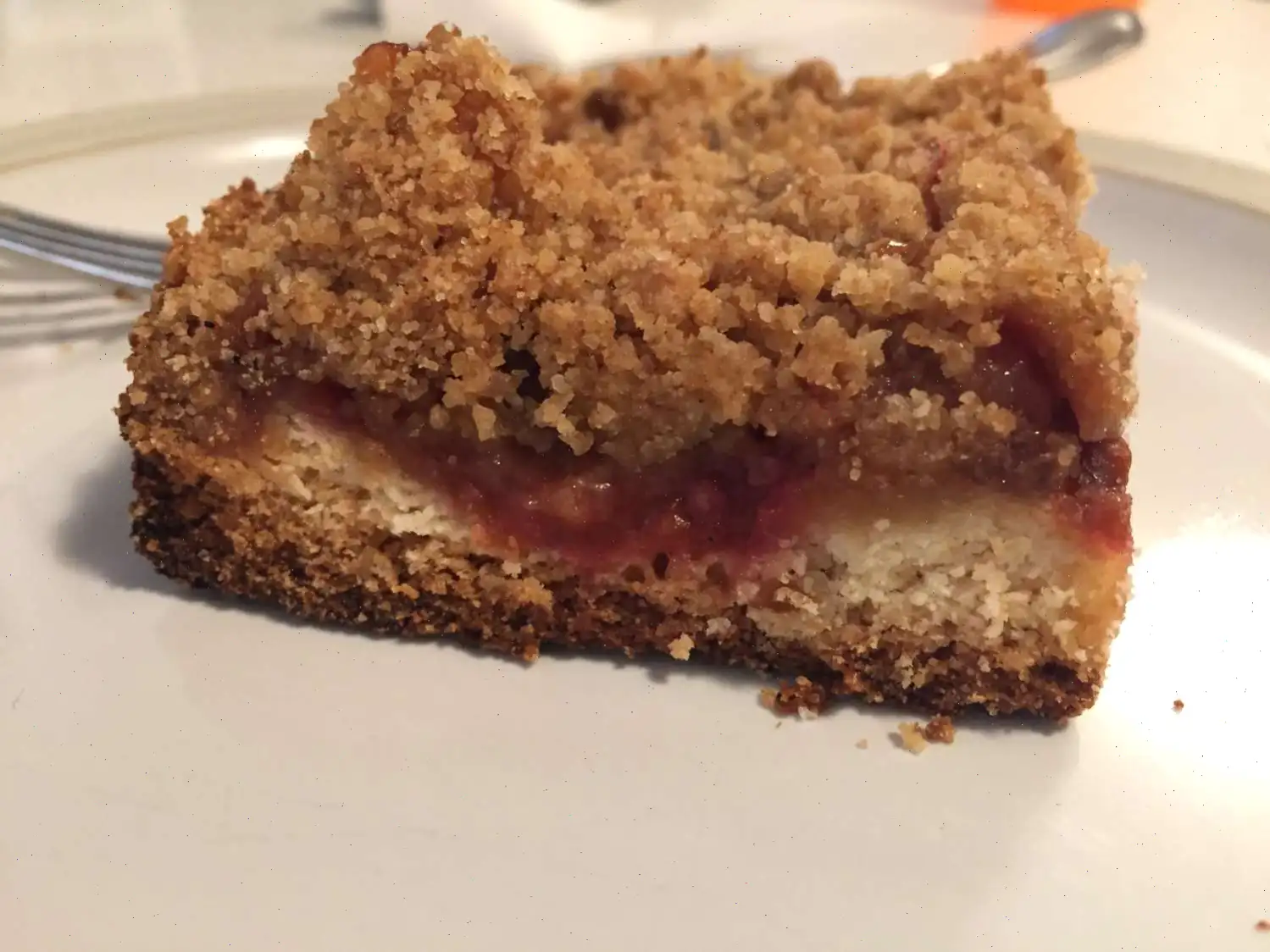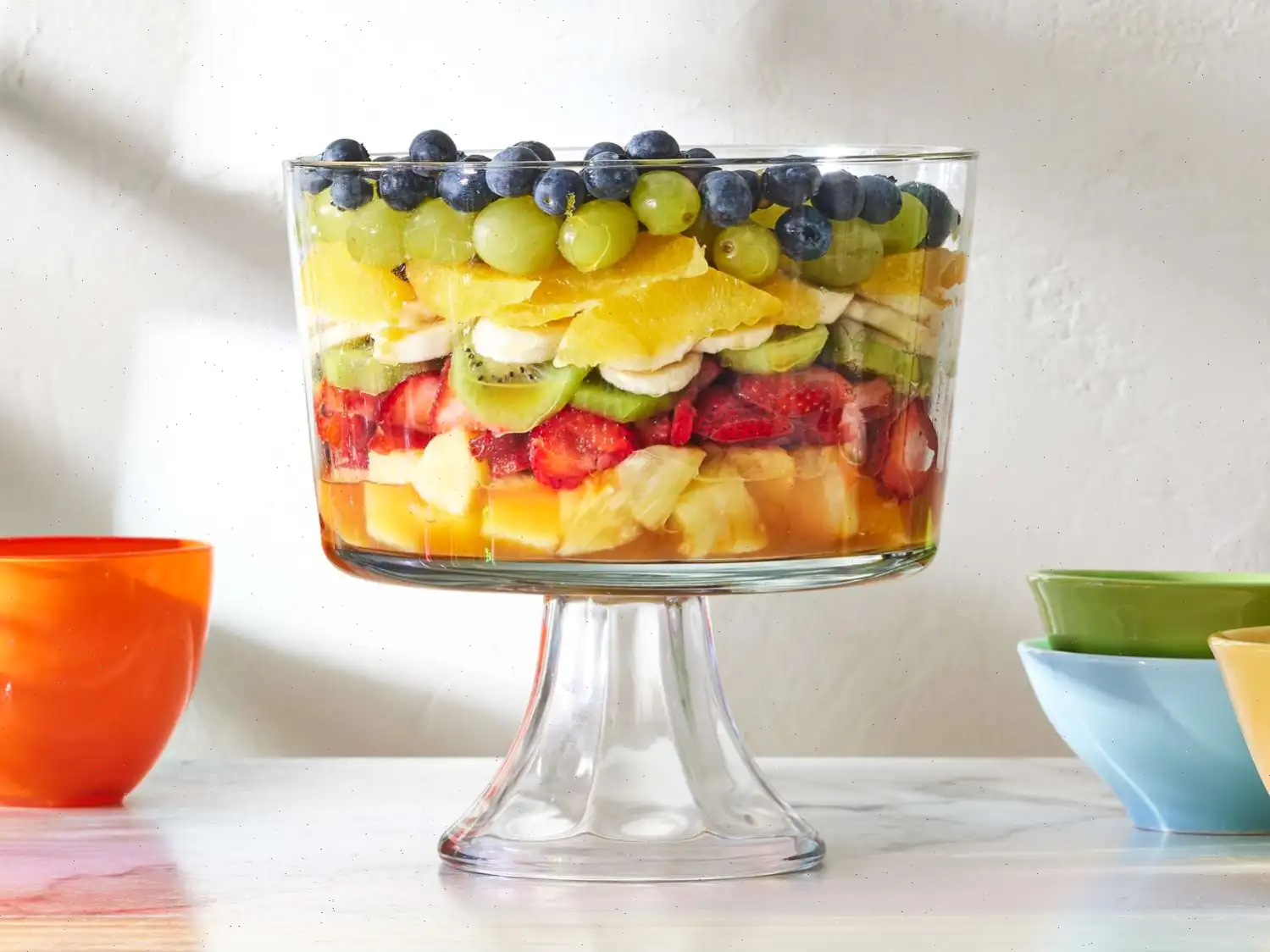
German Plum Cake Recipe
Plum Crumble Cake Recipe
Ingredients:
- 1 cup white sugar
- cup butter, softened
- 2 eggs
- 2 cups all-purpose flour
- 2 teaspoons baking powder
- 25 plums, pitted and halved
- 2 cups brown sugar
- cup cold butter, cut into cubes
Crumble Topping:
Directions:
- Preheat the oven to 350F (175C). Grease a 9x13-inch baking dish.
- In a bowl, beat together white sugar, softened butter, and eggs until creamy.
- In another bowl, whisk together 2 cups of flour and baking powder. Gradually add the flour mixture to the butter mixture and stir until just combined.
- Press the batter into the bottom of the prepared baking dish.
- Arrange the halved plums on top of the batter in the dish.
- To make the crumble topping, combine brown sugar, 2 cups of flour, and cold butter in a bowl. Use your fingers or a pastry cutter to mix until the mixture resembles coarse crumbs.
- Spread the crumble topping evenly over the plums in the baking dish.
- Bake in the preheated oven for about 1 hour 30 minutes, or until the cake is set and the plums are soft.
- Allow the cake to cool for 1 hour before slicing and serving.
Nutrition Facts (per serving):
| Calories | 364 |
| Total Fat | 10g (13%) |
| Saturated Fat | 6g (29%) |
| Cholesterol | 46mg (15%) |
| Sodium | 137mg (6%) |
| Total Carbohydrate | 66g (24%) |
| Dietary Fiber | 2g (8%) |
| Total Sugars | 40g |
| Protein | 5g (10%) |
| Vitamin C | 10mg (11%) |
| Calcium | 66mg (5%) |
| Iron | 2mg (11%) |
| Potassium | 231mg (5%) |
* Percent Daily Values are based on a 2,000-calorie diet. Your daily values may be higher or lower depending on your calorie needs.

This delicious German plum cake with a crumble topping is a delightful treat, perfect for any occasion. Served warm with a scoop of vanilla ice cream, it's an unforgettable dessert!
History of German Plum Cake
The German plum cake, or "Zwetschgenkuchen," has roots deep in the country's rich baking traditions. German baking has always been characterized by the use of seasonal fruits, and plums are one of the most common fruits used in late summer and early fall. The cake is typically made when plums are in season, and its popularity grew in Germany as a way to make the most of the bountiful harvest. The classic combination of soft plums, buttery cake, and crumbly topping is thought to have originated in the southern regions of Germany, where the plum trees thrive in the fertile soils of the Swabian Alps and Franconia.
Regional Variations
German plum cake has several regional variations, depending on where it's made. In Bavaria, the cake might feature a thicker crust and fewer plums, while in Swabia, the topping could be richer, made with a mix of butter, sugar, and flour that forms a crumble. Some variations might include the addition of cinnamon or other spices, giving the cake a warm, comforting flavor. In northern Germany, the cake is often served with a bit of whipped cream or custard. Regardless of regional differences, the focus is always on the plums, which give the cake its signature tartness, balancing the sweetness of the crumb topping.
How It Differs from Similar Dishes
While similar cakes like the French "tarte aux prunes" or Italian "crostata di prugne" also feature plums, the German version sets itself apart with its use of a dense, buttery cake base and a thick crumble topping. The French tart, by contrast, is often lighter with a crisp pastry base, and the Italian crostata typically has a more rustic, open design. In the German version, the plums are often placed skin side up, allowing their natural juices to soak into the cake as it bakes, resulting in a moister, more flavorful dessert. The inclusion of a crumble topping gives the German plum cake a hearty, comforting texture thats not found in the other variations.
Where It Is Served
German plum cake is a beloved dessert typically served in cafes across Germany during the fall and late summer. It is often enjoyed with a cup of coffee or tea, making it a perfect afternoon snack or dessert. You can also find it at family gatherings, festive occasions, and markets during plum harvest time. In some regions, it is even served as a breakfast cake, paired with a warm drink like hot cocoa or milk. In the United States, German plum cake has gained popularity among those who enjoy traditional European desserts and is often served at fall dinner parties or holiday gatherings.
Interesting Facts
- The traditional German plum cake is often made with Zwetschgen, a specific variety of European plums that have a rich flavor and firm texture, perfect for baking.
- German plum cake is a symbol of the harvest season and often marks the transition between summer and fall in many German-speaking countries.
- In some parts of Germany, this cake is a key element in "Kaffekrnzchen" (coffee circles), a social gathering where friends and family meet to enjoy cake and coffee.
- Plums were considered a luxury fruit in the past, and making a plum cake was a way to show off baking skills and hospitality in German households.








